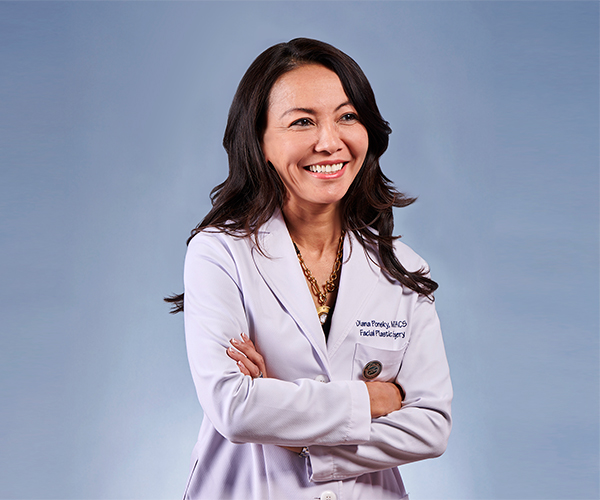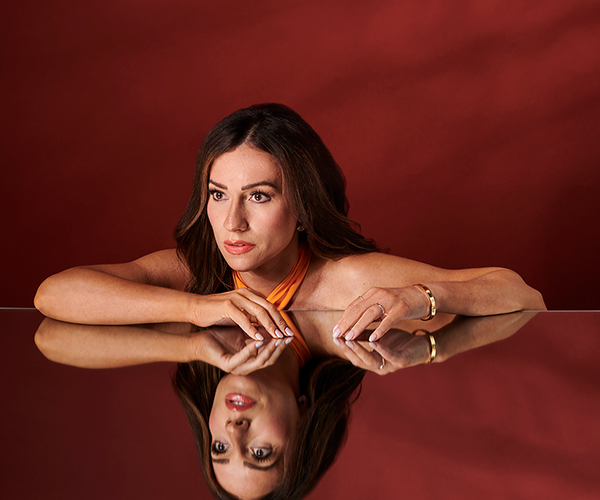Dr. Steven Waggoner still cannot shake the image of Katie Balogh bounding into his office two years ago. The bubbly, newly pregnant 29-year-old was there to see the director of gynecological oncology at University Hospitals MacDonald Women's Hospital after two of her previous pap smears had come back abnormal.
Waggoner was not particularly worried. The tests had shown atypical cells but no obvious cancer cells. But when Waggoner performed a cervical colposcopy on Balogh — tilting a lighted microscope to get a magnified view of the 29-year-old's cervix — he knew immediately there was trouble.
"There was an obvious abnormality. I could see it," he recalls. "I knew she had cancer then. ... When I was brought up, 25 years ago, really the only option would be the loss of pregnancy."
Waggoner told Balogh to come back the following week to discuss the results. He needed the time to review her biopsy, and he wanted to talk to her about her options in person. When Balogh arrived for the next appointment, she recalls being nervous, but optimistic.
"I thought maybe there was something small, but I wasn't worried about any major health issues," she says.
Then Waggoner spoke the words she'll never forget.
"I'm sorry," he told her. "But we're dealing with cervical cancer."
Waggoner told her she needed to start thinking about treatment. One option was simply to ignore the cancer until after the baby's birth, but the doctor told Balogh he didn't feel comfortable waiting.
The cure rate for cervical cancer ranges from about 90 percent when discovered in the first stages to less than 20 percent in the fourth stage.
"Katie's cancer was too large for me to avoid treating for several months," Waggoner says. "Had it grown quickly, we would have faced the need to deliver a very premature infant and a much greater chance of removing the uterus."
The second option was to undergo a vaginal trachelectomy, which would remove Balogh's cervix and part of her vagina. A vaginal trachelectomy is a common treatment option for patients with early-stage cervical cancer, and it's regarded as the best option for preserving a woman's future fertility. But there was a catch: Waggoner had never heard of a case of the surgery being performed on a pregnant woman before. Nevertheless, he remained confident.
"Katie was healthy, the baby was healthy on ultrasound," he says, "and there was no sign the cancer had spread before surgery."
The risks were high: excess bleeding and miscarriage being the biggest. But after Balogh and her family met with Waggoner, they agreed the biggest risk of all was not treating the cancer, though Katie still was concerned for her baby.
"I was worried about my own health, sure, but I just wanted this baby so bad," she says. "I almost didn't care what happened to me."
To help lessen the chance of a premature delivery, Waggoner told Katie and her husband, Justin, that he wanted to reinforce the uterus during the surgery. After taking out the cervix, the neck of the uterus was stitched up with strong thread to ensure it wouldn't open too soon. In July, two months after her first meeting with Waggoner and two weeks before her 30th birthday, Balogh was wheeled into surgery. Her cervix was removed transvaginally, and her uterus carefully stitched up. The remaining five months of Balogh's pregnancy were spent on bed rest and on Nov. 25, 2011, Balogh went in for her scheduled cesarean section and gave birth to a healthy 5-pound, 15-ounce baby girl.
Waggoner was present during the C-section to remove Balogh's pelvic lymph nodes to make sure the cancer hadn't spread. Today, 14 months later, both mother and daughter are doing well. Samantha is walking and "growing cuter by the minute," Balogh says.
And Balogh is cancer-free. Because no cancer cells had been found in her lymph nodes, she didn't have to go through radiation or chemotherapy. Instead, she gets regular pap smears done every few months. She says she has her daughter to thank for it all.
"Sammy brings us so much joy and fulfillment. But it goes beyond that," Balogh says. "Being pregnant with her might have saved my life. I might never had known I had cancer, if it weren't for her."



